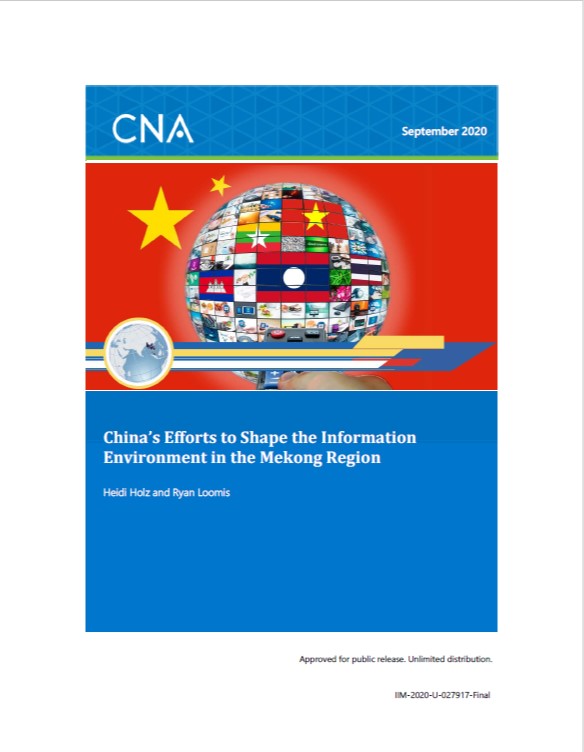This document summarizes a series of five CNA reports on China’s efforts to shape the information environment in Cambodia, Laos, Myanmar, Thailand, and Vietnam, and offers broad observations about how China is attempting to influence what audiences in the Mekong region read, hear, and watch about China.
Observations and trends
China is actively seeking to shape the information environment throughout the Mekong region.
- We found evidence that China was employing a broad range of tactics, tools, and techniques to shape the views of audiences in Cambodia, Laos, Myanmar, Thailand, and Vietnam.
- The scope of Beijing’s efforts touches virtually all aspects of the information environment in each country, including digital, print, and broadcast media, as well as information and telecommunications technology (ICT) infrastructure.
China’s efforts to shape the information environment in the Mekong region are aimed at promoting narratives that further Beijing’s strategic interests.
- PRC media promotes narratives that emphasize China’s historical, cultural, political, and geographic ties with each country to foster receptivity for Beijing’s diplomatic initiatives.
- Beijing also consistently seeks to promote the narrative that cooperation with China produces tangible economic benefits. This narrative was especially prominent in PRC official
statements and media targeted at audiences in Laos, Cambodia, and Myanmar—all of which are home to major Belt and Road Initiative (BRI) projects. - As the global COVID-19 pandemic unfolded, Beijing sought to portray itself as the primary source of aid and assistance to the Mekong countries.
Approved for public release. Unlimited distribution.
Cooperative Agreement/Grant Award Number: SGECPD18CA0027.
Details
- Pages: 56
- Document Number: IIM-2020-U-027917-Final
- Publication Date: 9/1/2021
